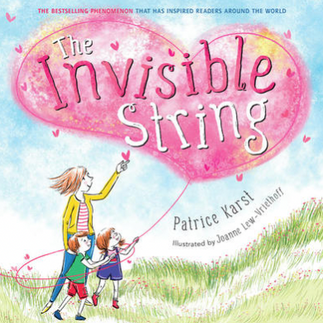Authored by Paige Stoker, LMFT

The death of someone we love is a circumstance we will all face in this life. Whether it is a pet, a friend, a parent, or another family member, your child will experience it one day too. Grief is a complicated topic that most of us shy away from. Understandably we don’t want to think about it or share our feelings about it with others, especially with children. I hope that after reading this, you feel more prepared to talk to your child about grief and death and understand your own experience with grieving.
Let’s start with some information about how children may view death. To a toddler or young child, death is a difficult concept to grasp. Oftentimes, a young child does not understand that death is final, and that the person or pet will not be coming back. They may ask questions about when the deceased will return or come up with an idea of where they may be. Being straightforward and using simple language can be the best way to explain death to your child. Sometimes it’s helpful to have a book to read to your child to help guide the conversation and reference for vocabulary. For older kids and teens, the concept of death is more understandable but still difficult to cope with. Anger, frustration, and irritability may be more apparent in your child after a death. For all children, allowing questions and continued conversations about death is a great way to help them grieve. All feelings related to grief are ok, but not all behaviors are. It can be helpful to separate the feelings that your child is experiencing from the behaviors they are showing/engaging in.
There is a commonly known model to help describe the different stages of grief by Elisabeth Kübler-Ross. The stages are:
Denial
Anger
Bargaining
Depression
Acceptance
Although this model was originally intended to help describe the experience of patients who were terminally ill, it can also describe the ever-changing experience of grief as well. The original model was designed to show a step-by-step process that individuals experience through death. That is not how grief works. With grief, these stages are less like steppingstones and more like a dizzy spell where you don’t know where you will fall. Knowing these stages can help you and your family navigate the feelings and experiences that come with a loved one’s death.
Feelings of grief and loss do not simply go away one day. The hole that that person has left in our lives cannot be filled. We will continue to miss them AND we will learn to live without them, as painful as it may be. Our lives will fill in around the hole that they have left but never fill it in. It is important to show your family that you are affected by this death as well. It’s okay to cry around your children and show them your authentic feelings, even the angry ones. The best way for children to learn how to cope with uncomfortable feelings is by watching you do the same. You get to model how to handle these feelings. You may have big feelings that fill the room and that’s ok. You are grieving just like they are. Explaining to your child that you are grieving as well can help show them that this is part of normal processing.
Talking about or sharing stories of the person/pet that has passed is another great way to encourage your family’s healing. At times, sharing stories may be painful, and at others, it will bring a much-needed smile to your face. The stories may elicit tears and laughter all at the same time. When you share stories with your child it encourages them to do the same. The person is physically gone from your life but the love that you have for one another will always remain.
Explaining your own beliefs about what happens after death can also provide some reassurance to your child. This can include the facts about what happens to that person’s body (cremation, burial, etc.) and/or your own spiritual or religious beliefs. Providing space for your child to explore their own beliefs of what happens after death can be helpful as well. They may have a different outlook on things that you haven’t yet explored yourself.
We all grieve differently. Each family member will show and share in different ways and although this person's death may be a sad and difficult time for your family it can also be a time to bond with one another and show your unique love.
Below are some book recommendations that I have used with grieving families. Some of the books are related to specific experiences of death and others take a broader approach.
Children’s Books:
· The Invisible String by Patrice Karst
· Ida Always by Caron Levis
· Grief Is An Elephant by Tamara Ellis Smith
· Everywhere, Still: A Book about Grief, Loss & the Way Love Continues by M.H. Clark
· Is Daddy Coming Back in a Minute? by Elke & Alex Barber
· What Happened to Daddy’s Body? by Elke & Alex Barber
· The Memory Box: A Book About Grief by Joanna Rowland
· Something Very Sad Happened by Bonnie Zucker
· The Rabbit Listened by Cori Doerrfeld
Paige Stoker, LMFT #146917 is a licensed marriage & family therapist specializing in helping kids and teens with anxiety, depression, grief/loss, and medical diagnoses. Contact her at 424.209.2543 or pstoker@empiretcs.net.




















Comments